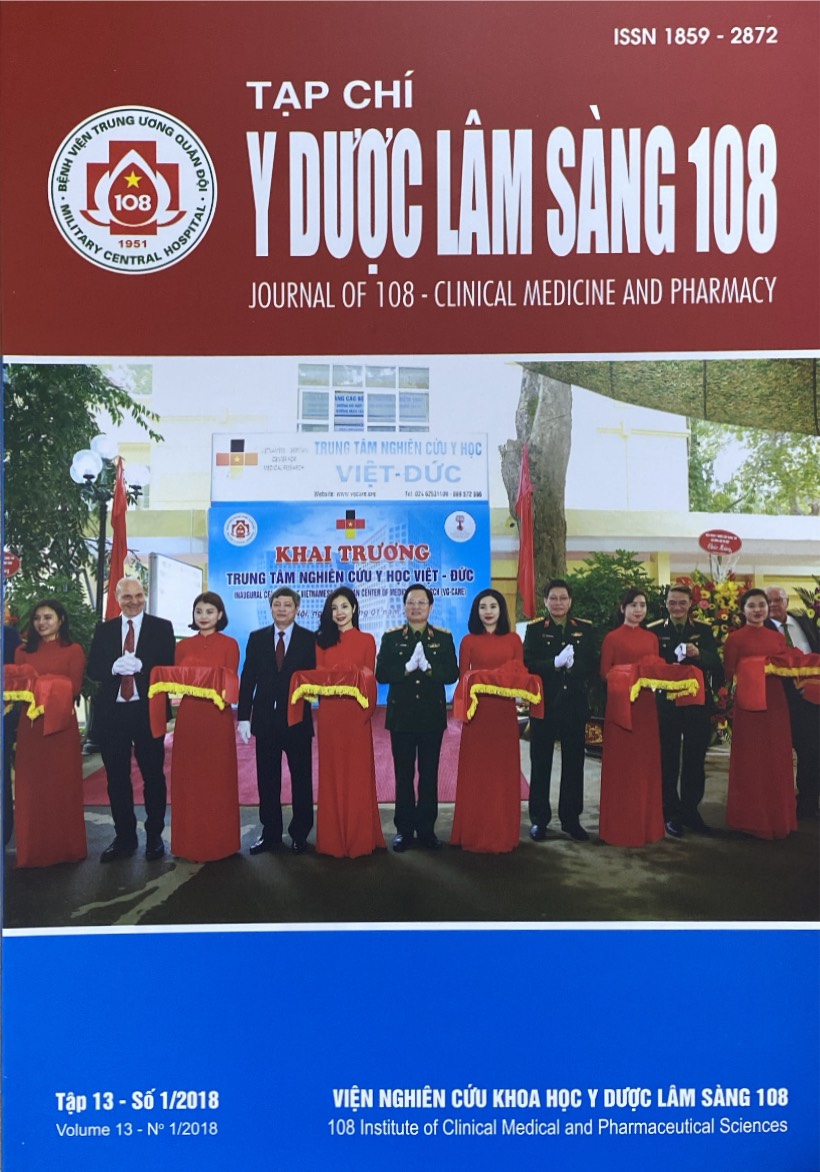Comparison between the central and brachial blood pressure values in elderly patients treated in A1 Department, 108 Military Central Hospital
Main Article Content
Keywords
Abstract
Objective: Comparison between the central and brachial blood pressure values in elderly patients treated in A1 Department, 108 Military Central Hospital. Subject and method: This prospective, described and cross-sectional study, assessed 120 elderly patients, selected in the period from June 2017 to August 2017, compared central and brachial SBP using a Centron cBP301 (Centron Diagnostis, UK). Result: 120 patients in the study, with an average age of 73 ± 7 years, men (100%), artery system hypertension (50%). Brachial systolic pressure (bSP) is higher than central systolic pressure (cSP) in patients with hypertension and normal blood pressure (153 ± 17mmHg versus 140 ± 17mmHg and 120 ± 11mmHg with 108 ± 12mmHg, p<0.05). There is no difference in Δ(bSP-cSP) between hypertensive and normal blood presure groups (12 ± 6mmHg versus 12 ± 7mmHg). This difference increases with age. There is a similarity between central diastolic pressure and brachial diastolic pressure in both hypertensive and normal blood pressure (87 ± 11mmHg versus 88 ± 11mmHg and 74 ± 8mmHg vs 75 ± 8mmHg). Δ(bSP-cSP) is positive correlated with age, height, negative correlated with heart rate. Conclusion: Brachial systolic pressure is higher than central systolic pressure in patients with hypertension and normal blood pressure. There is no difference in Δ(bSP-cSP) between hypertensive and normal blood pressure groups. Δ(bSP-cSP) is positive correlated with age, height and negative correlated with heart rate.
Article Details
References
2. Mancia G, Fagard R, and Narkiewicz K (2013) The Task force for the management of arterial hypertension of the European Society of Hypertension (ESH) and of the European Society of Cardiology (ESC): 2013 ESH/ESC guidelines for the management of arterial hypertension. Journal of Hypertension 31(7): 1281-1357.
3. James PA, Oparil S, Carter BL et al (2014) 2014 evidence-based guideline for the management of high blood pressure in adults. JAMA 311(5): 507-520.
4. McEniery CM, Cockcroft JR, Roman MJ, Franklin SS, and Wilkinson IB (2014) Central blood pressure: Current evidence and clinical importance. European Heart Journal 35(26): 1719-1725.
5. Vlachopoulos C, Aznaouridis K, O'Rourke MF, Safar ME, Baou K, and Stefanadis C (2010) Prediction of cardiovascular events and all-cause mortality with central haemodynamics: A systematic review and meta-analysis. European Heart Journal 31(15): 1865-1871.
6. Williams B, Lacy PS, Thom SM, Cruickshank K, Stanton A, Collier D, Hughes AD, Thurston H, O'Rourke M; CAFE Investigators; Anglo-Scandinavian Cardiac Outcomes Trial Investigators; CAFE Steering Committee and Writing Committee (2006) Differential impact of blood pressure-lowering drugs on central aortic pressure and clinical outcomes: Principal results of the Conduit Artery Function Evaluation (CAFE) study. Circulation 113(9): 1213-1225.
7. Agnoletti D, Millasseau S, Topouchian J, Safar ME, Blacher J (2014) Comparison of central blood pressure devices on the basis of a modified protocol of the European Society of Hypertension: Application to the Centron cBP301. Blood Press Monit 19(2): 103-108.
 ISSN: 1859 - 2872
ISSN: 1859 - 2872
